Top Interfaces for Large Language Models in 2025: Enhancing User Productivity

As artificial intelligence continues to evolve, user interfaces for Large Language Models (LLMs) are becoming more sophisticated, offering enhanced productivity and seamless integration into daily workflows. These interfaces are designed to make interactions with AI more intuitive, efficient, and effective.
In this article, we explore the top AI-powered interfaces for LLMs in 2025, highlighting their key features, strengths, and limitations to help you choose the best tool for your needs.
Rethinking How We Choose AI-Powered LLM Interfaces
When selecting an AI interface, it's crucial to look beyond basic request-and-response interactions. The most effective tools are those that closely align with your actual needs and add significant value to your workflow. Consider the following factors:
- Task-Specific Functionality: Does the interface offer features tailored to your specific tasks or industry?
- Depth of Integration: How well does the tool integrate with your existing information structures and workflows?
- Value Addition: Beyond answering queries, does the interface enhance understanding, facilitate decision-making, or improve productivity in meaningful ways?
- Interactivity Within Information: Can you interact with the AI within the context of your data or documents, rather than through isolated prompts?
- Scalability and Adaptability: Is the tool capable of growing with your needs and adapting to new challenges?
Why Text-Based Conversational Interfaces Aren't Always the Best Fit
While text-based conversational interfaces like chatbots are versatile and user-friendly, they may not be the optimal choice for every task. Their linear request-and-response nature can limit the depth of interaction and may not effectively support complex workflows or knowledge management needs. For tasks that require organizing, structuring, and navigating large amounts of information, more dynamic and integrated interfaces can offer greater value.
Top AI-Powered LLM Interfaces of 2025
1. Knowing® – A Unique Way to Explore and Expand Ideas with AI
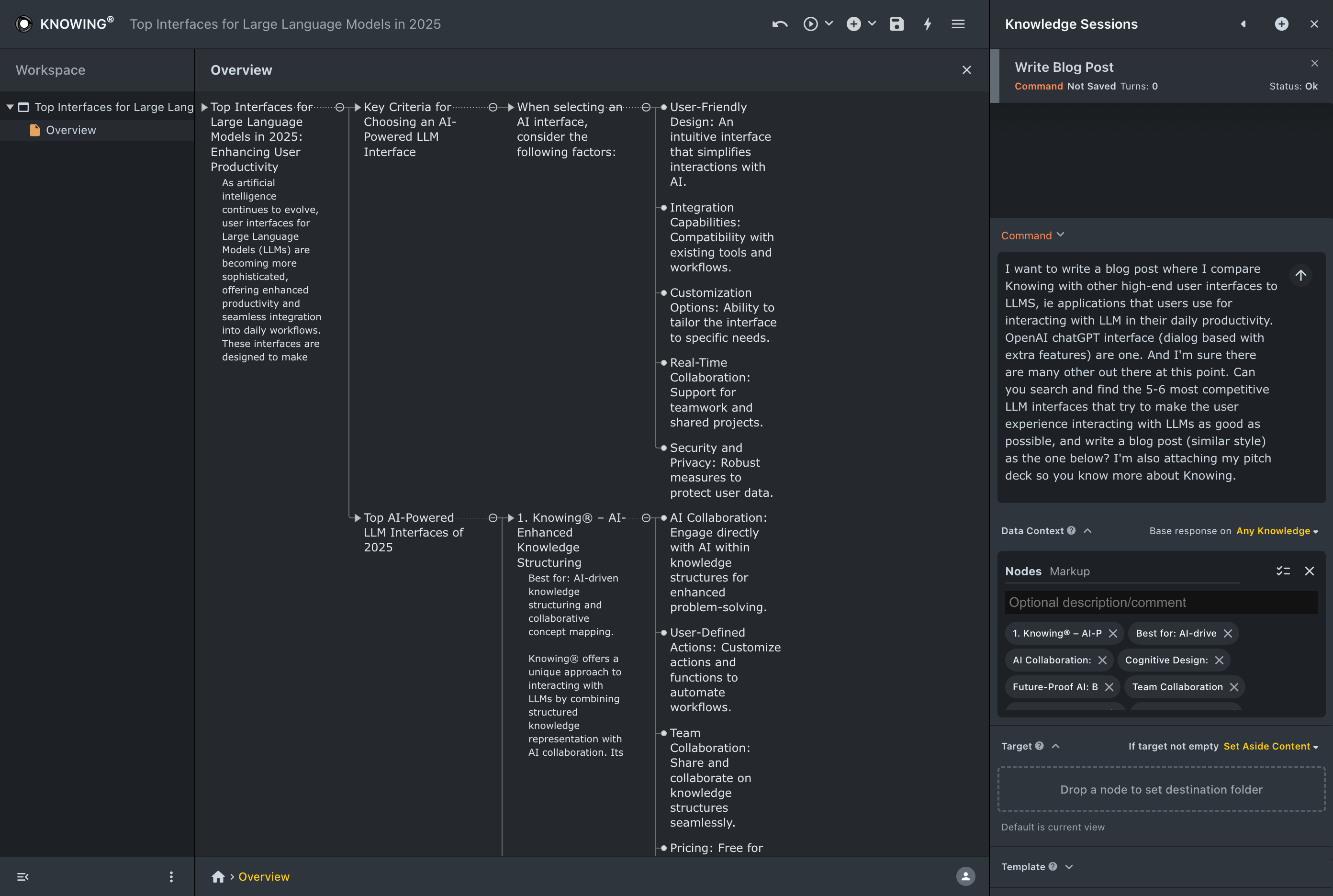
Best for: Users who seek a deeper, integrated approach to interacting with LLMs within structured knowledge environments for complex analysis and conceptual exploration.
Knowing® reimagines how users can interface with LLMs by embedding AI directly within a cohesive, concept-based knowledge structure. Unlike typical LLM interfaces that operate on isolated prompts, Knowing® enables users to interact with AI within their data’s context, making insights more relevant and actionable. This approach, however, comes with a learning curve—ideal for those serious about leveraging AI for profound understanding and structured knowledge management.
- Contextual AI Engagement: Connect with AI directly within your structured knowledge, allowing for a more grounded, meaningful exploration of ideas.
- Unified Knowledge Base: Build a comprehensive structure where all information is interconnected, enabling AI to offer insights that align with your overall understanding.
- Dynamic Concept Mapping: Visualize ideas in tree-like layouts, which helps organize and explore complex concepts interactively.
- Customizable Workflow Automation: Design AI-driven workflows within your knowledge structures, enhancing productivity and depth of engagement.
- Conceptual Spaces: Unlike standard graphs, Knowing®’s Conceptual Spaces arrange ideas in multidimensional contexts, offering a richer, more intuitive way to explore and expand knowledge.
Pricing: Free for local use; additional features available through paid plans.
Visit: Knowing site | Knowing docs | Knowing app
2. OpenAI's ChatGPT Interface – Conversational AI Assistant
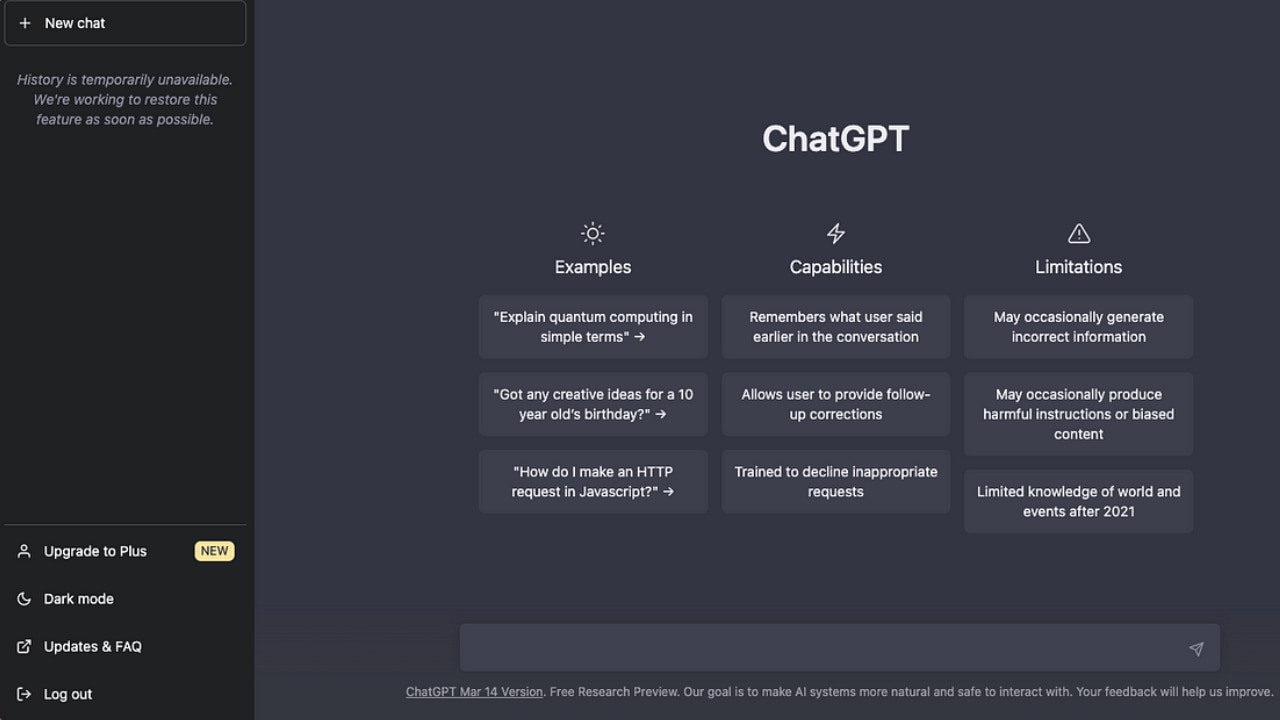
Best for: General-purpose assistance through conversational AI.
OpenAI's ChatGPT provides a user-friendly conversational interface for a wide range of tasks. While highly versatile, its linear interaction model may not be ideal for complex, structured tasks.
- Natural Language Processing: Excels in understanding and generating human-like text.
- Wide Applicability: Suitable for drafting emails, answering questions, and creative writing.
- Platform Compatibility: Can be integrated with various applications.
Pricing: Free tier available; premium features offered through subscription.
Visit: OpenAI ChatGPT
3. Notion AI – Modular Workspace with AI Integration
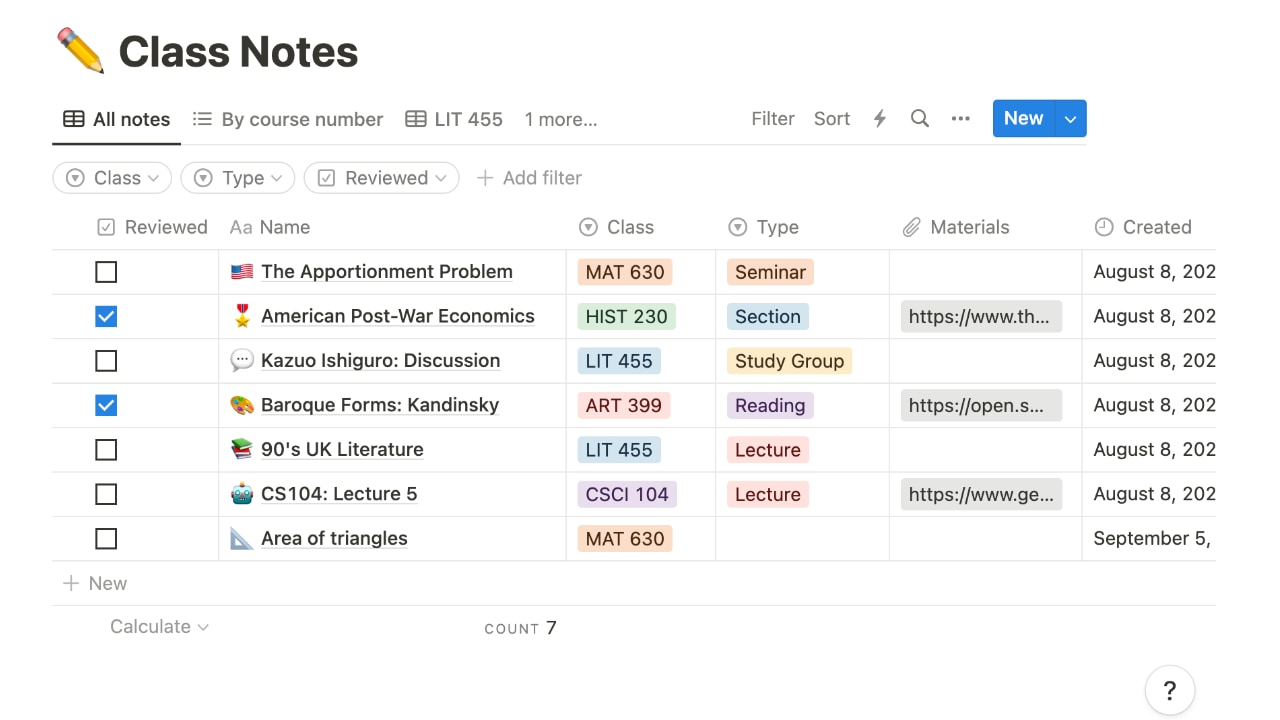
Best for: Productivity and organization enhanced by AI within a modular workspace.
Notion AI brings AI capabilities into a flexible workspace environment, allowing users to manage projects, documents, and databases with intelligent assistance.
- Contextual AI Assistance: Generate and edit content within your workspace modules.
- Integrated Search: AI searches across connected apps for comprehensive information retrieval.
- Customization: Tailor the workspace to fit your specific workflow needs.
Pricing: Available as an add-on to Notion plans for $10 per member per month.
Visit: Notion
4. Jasper – AI Content Generation Platform
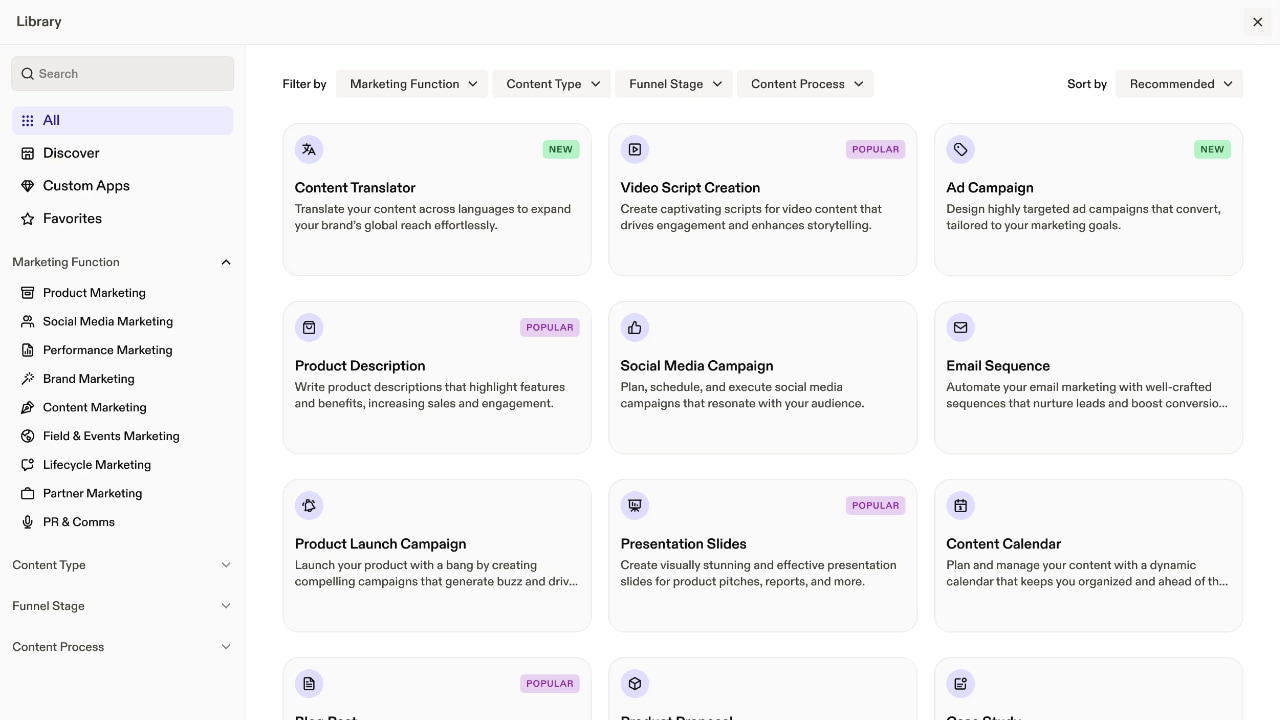
Best for: Automated marketing content creation with specialized templates.
Jasper focuses on adding value by providing AI-driven content tailored for marketing purposes. Its template-based approach streamlines the creation of high-quality copy.
- Specialized Templates: Offers templates for ads, emails, social media posts, and more.
- Brand Voice Consistency: Ensures generated content aligns with your brand's tone.
- Collaboration Tools: Supports team efforts in content creation.
Pricing: Subscription-based with various plans.
Visit: Jasper
5. Microsoft Copilot – AI Integration in Office Suite
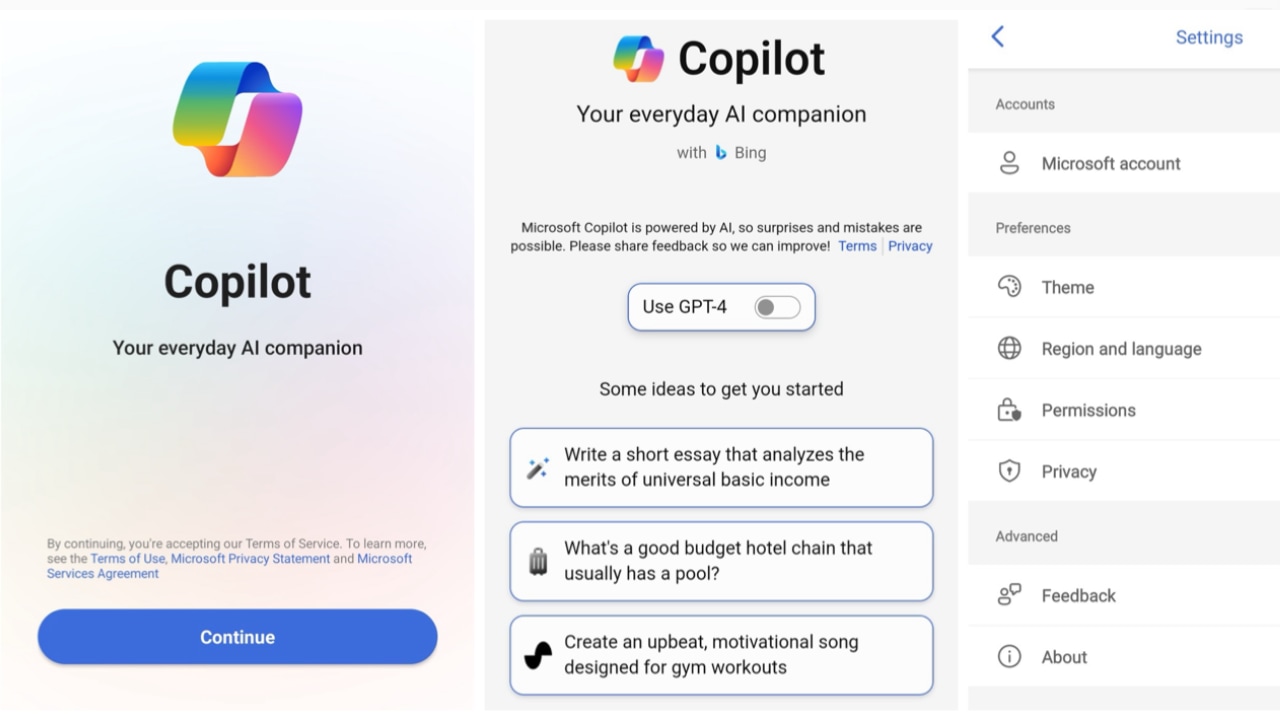
Best for: Enhancing productivity within familiar Microsoft Office applications.
Microsoft Copilot integrates AI directly into the tools many professionals use daily, adding value by streamlining tasks within Word, Excel, and PowerPoint.
- In-Document Assistance: Get AI suggestions while working on documents and spreadsheets.
- Data Insights: Receive analytical support within Excel for better decision-making.
- Seamless Workflow: No need to switch between applications; AI support is built-in.
Pricing: Included with Microsoft 365 subscriptions.
Visit: Microsoft Copilot
6. Grammarly – AI Writing Assistant
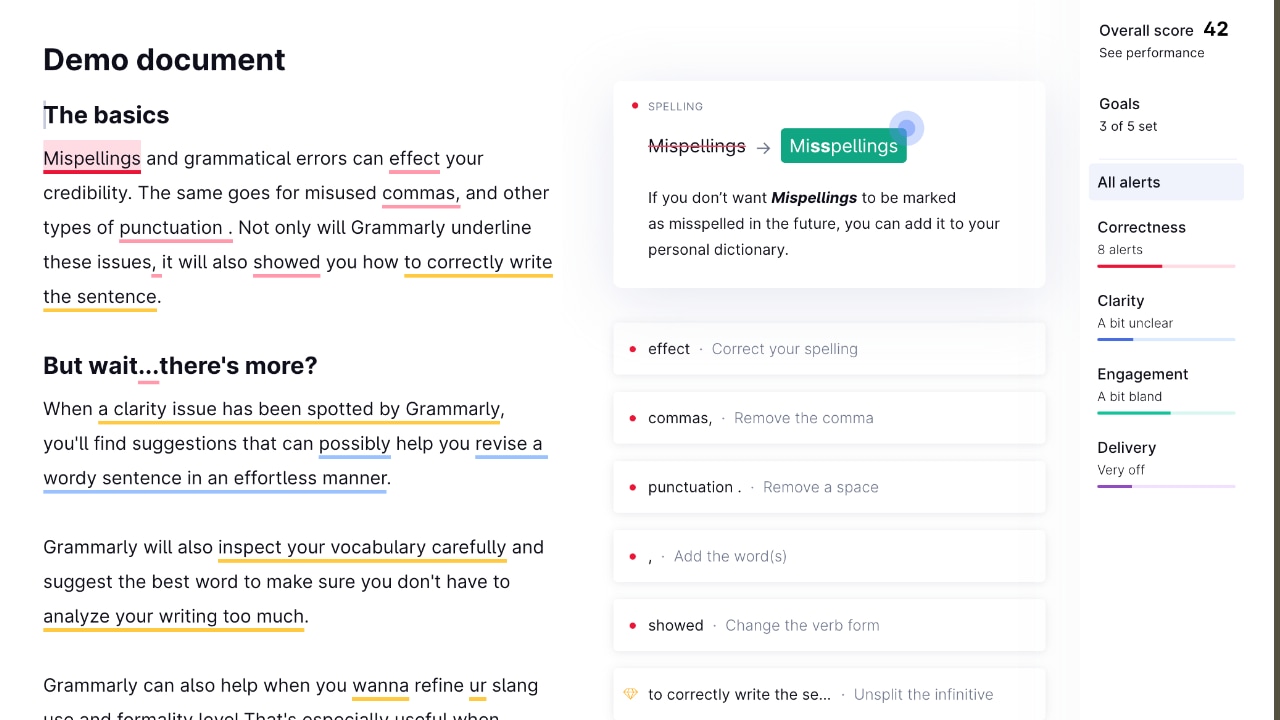
Best for: Improving writing quality with real-time AI feedback.
Grammarly adds value by enhancing the clarity and correctness of your writing across various platforms.
- Immediate Corrections: Offers grammar and spelling suggestions as you type.
- Tone and Style Adjustments: Helps align your writing with the desired tone.
- Cross-Platform Support: Works with browsers, word processors, and email clients.
Pricing: Free basic plan; premium features available through subscription.
Visit: Grammarly
7. Cohere's Command R+ – Business-Centric AI Assistant
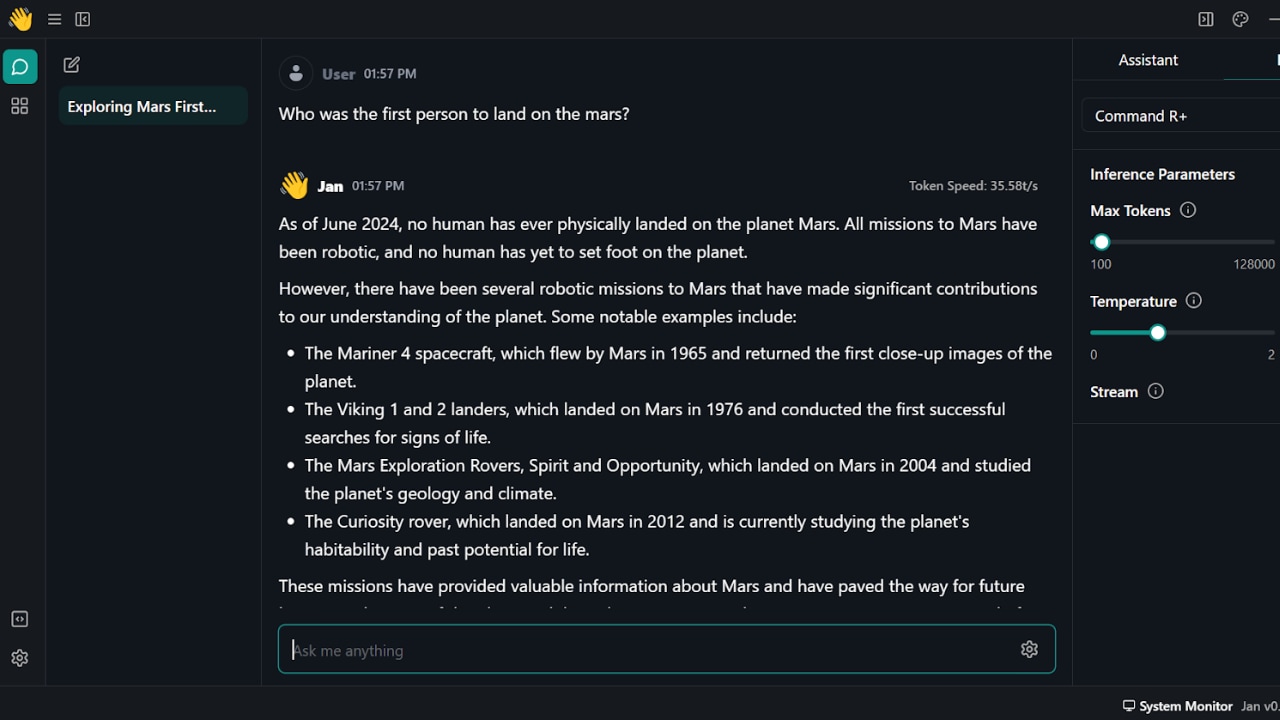
Best for: Enterprise solutions with specialized AI functionalities.
Cohere's Command R+ is tailored for businesses that require AI assistance integrated deeply into their operations.
- Task-Specific AI: Designed for document summarization and multilingual support.
- Application Interaction: Can perform tasks within other apps, enhancing workflow efficiency.
- Enterprise Focus: Prioritizes features that meet business needs over general-purpose capabilities.
Pricing: Enterprise pricing available upon request.
Visit: Cohere
8. Anthropic's Claude – Safe and Reliable AI Assistant
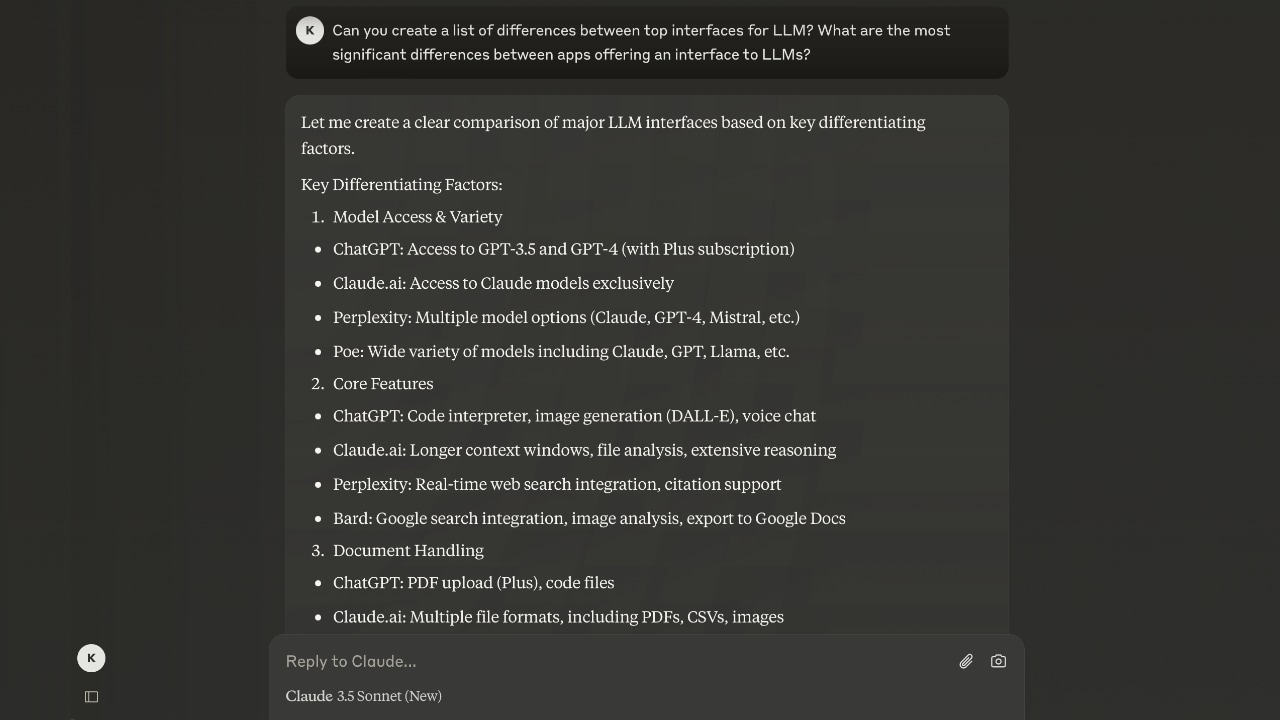
Best for: Organizations that prioritize AI safety and reliability.
Claude aims to add value by providing AI interactions that are not only helpful but also aligned with ethical guidelines.
- Safety-Oriented Design: Minimizes harmful outputs and ensures trustworthy interactions.
- User-Guided Behavior: Allows for customization to align with user needs.
- Versatile Applications: Suitable for tasks ranging from writing to coding.
Pricing: Details available upon request.
Visit: Anthropic
9. Perplexity AI – Conversational Search Engine
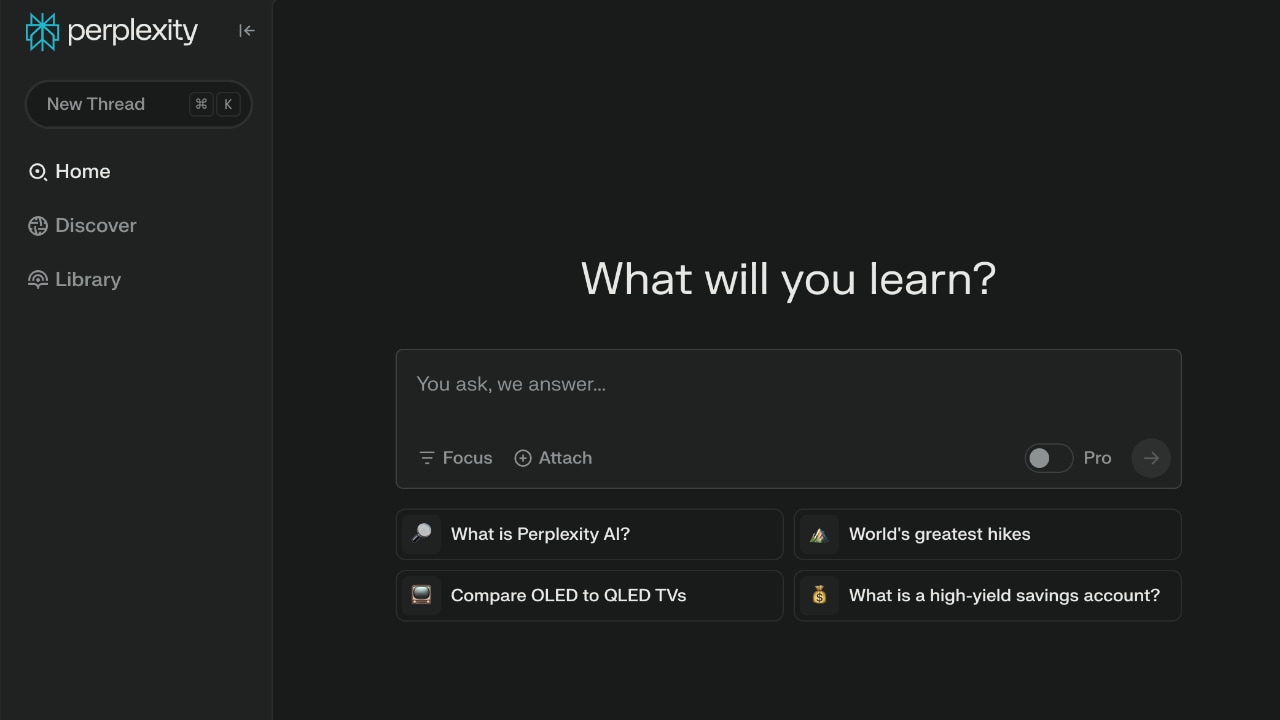
Best for: Enhanced search experiences with direct AI assistance.
Perplexity AI adds value by transforming the way users interact with search engines, providing immediate, conversational responses.
- Direct Answers: Bypasses the need to sift through links for information.
- Source Transparency: Cites sources for the information provided.
- Intuitive Interface: Makes searching more interactive and efficient.
Pricing: Free to use.
Visit: Perplexity AI
10. GitHub Copilot – AI Pair Programmer
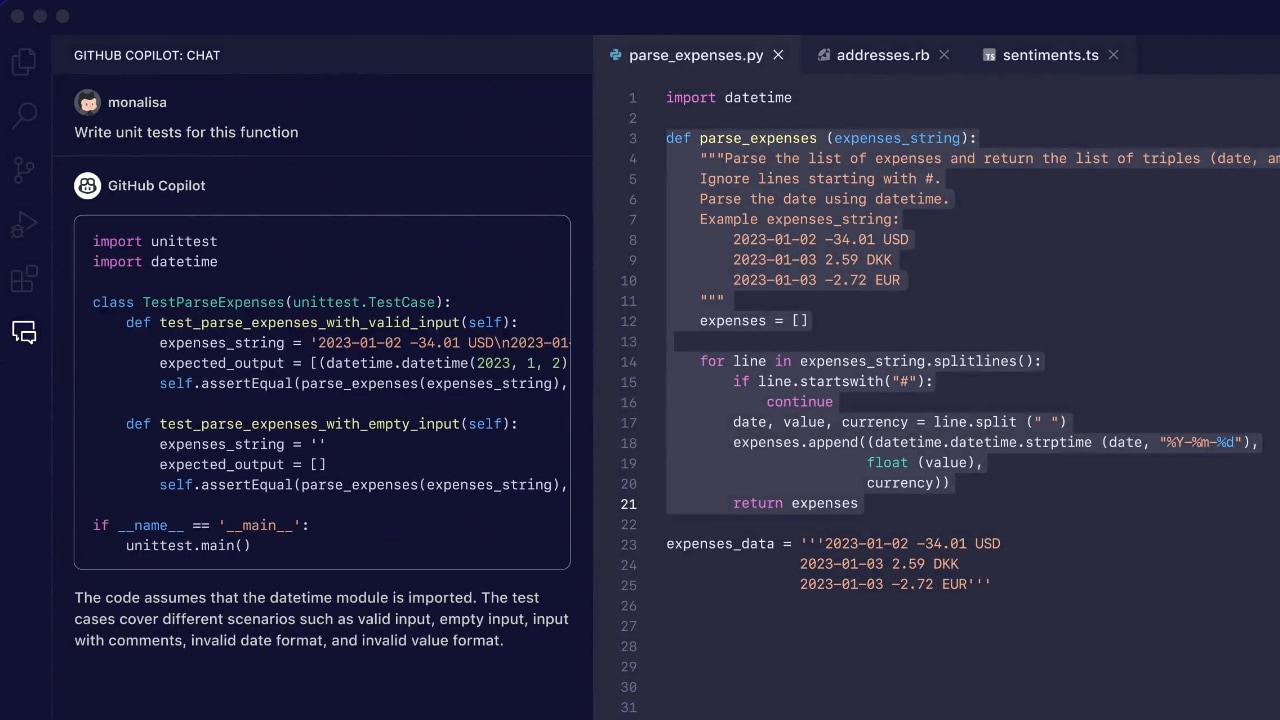
Best for: Developers looking for integrated AI assistance within their coding environment.
GitHub Copilot enhances the development process by providing code suggestions within the editor, adding significant value to coding tasks.
- Contextual Code Suggestions: Offers relevant code snippets based on your current work.
- Multi-Model Support: Choose from models by different providers for flexibility.
- Seamless Integration: Works within popular code editors like Visual Studio Code.
Pricing: Subscription-based with a free trial available.
Visit: GitHub Copilot
Choosing the Right AI-Powered LLM Interface
The best AI interface is one that aligns closely with your specific needs and adds tangible value to your workflow. If your work involves managing complex information structures and you want to interact with AI within that context, Knowing® offers a unique and powerful solution. By engaging with the AI from within your data, you gain deeper insights and a more integrated experience.
For those who prefer a conversational approach for general tasks, OpenAI's ChatGPT remains a versatile option, though it may not offer the depth required for specialized tasks. Tools like Notion AI and Microsoft Copilot provide AI assistance within the applications you already use, enhancing productivity without disrupting your workflow.
As AI technology continues to advance, interfaces that allow for more integrated and context-rich interactions—like Knowing's unified knowledge structure—are likely to become increasingly valuable in enhancing productivity and streamlining workflows across various domains.